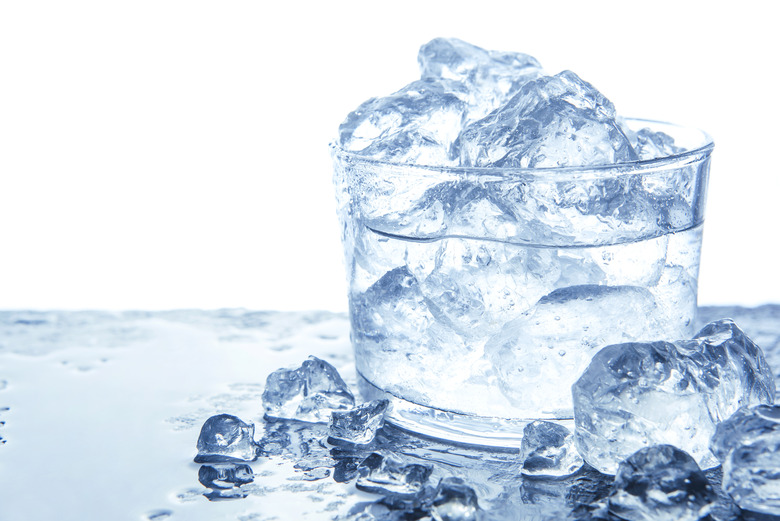How Are Mixtures And Pure Substances Alike
Mixtures and pure substances are alike because mixtures are made up of two or more pure substances. This means that where pure substances have a single set of properties, mixtures may have two or more sets of the same properties, based on the pure substances that make up the mixture. At the same time, a pure substance can also be a mixture of two different states.
Mixtures can be homogeneous, meaning all parts of the mixture have the same properties, or heterogeneous, meaning different parts have different properties. In both cases, mixtures differ from pure substances because the components of the mixture can be separated and because the percentage of each component in a mixture can vary.
TL;DR (Too Long; Didn't Read)
Mixtures are like pure substances because they are either homogeneous or heterogeneous combinations of two or more pure substances. Like pure substances, mixtures have clearly defined properties such as boiling point, weight and color, but contrary to pure substances, they can be separated into their components and their percent composition can vary.
Common Properties
Common Properties
Both mixtures and pure substances have weight, volume and color while solids also have shape and hardness or texture. Pure substances and mixtures have points at which they boil and solidify, although mixtures may have several points reflecting the pure substances that are mixed together.
Special cases of mixtures that are also pure substances are heterogeneous mixtures of a pure substance existing in two different states. For example, a mixture of crushed ice and water is a heterogeneous mixture because it has different properties depending on whether the properties of a lump of ice or liquid water are measured. It is also a pure substance because both the ice and the water are a single pure compound.
Both mixtures and pure substances have chemical properties such as flammability, toxicity, heat of combustion and the reactivity with other substances. Pure substances and homogeneous mixtures have the same chemical properties throughout the substance or mixture while the chemical properties of heterogeneous mixtures may vary in different parts of the mixture.
Differing Properties
Differing Properties
Mixtures and pure substances are different when it comes to separating them. Pure substances can't be separated into any other substances while mixtures can always be separated into two or more pure substances by physical means. Such physical methods include distillation to separate two liquids or a liquid from a solid, filtration to remove solids from liquids, centrifuging to separate materials of different weights and decanting to separate a liquid from a heavy solid.
A further difference between mixtures and pure substances is that the chemical composition of a pure substance is always the same, It may be an element made up of single atoms or a compound made up of molecules that combine several different atoms. In any case, the percentage of each element in a compound is fixed.
Mixtures do not have a fixed composition. Whether they are homogeneous or heterogeneous mixtures, their composition can change arbitrarily. For example, salt water is a solution that is a homogeneous mixture of salt and water. The amount of salt in the water can very substantially. Oil and vinegar form a heterogeneous mixture and any amount of oil can be mixed with any amount of vinegar.
While this possible variation is a key feature of mixtures and distinguishes them from pure substances, the fact that mixtures are made up of pure substances remains the main basis for their similarities.
Cite This Article
MLA
Markgraf, Bert. "How Are Mixtures And Pure Substances Alike" sciencing.com, https://www.sciencing.com/how-are-mixtures-and-pure-substances-alike-13710257/. 27 March 2018.
APA
Markgraf, Bert. (2018, March 27). How Are Mixtures And Pure Substances Alike. sciencing.com. Retrieved from https://www.sciencing.com/how-are-mixtures-and-pure-substances-alike-13710257/
Chicago
Markgraf, Bert. How Are Mixtures And Pure Substances Alike last modified March 24, 2022. https://www.sciencing.com/how-are-mixtures-and-pure-substances-alike-13710257/
